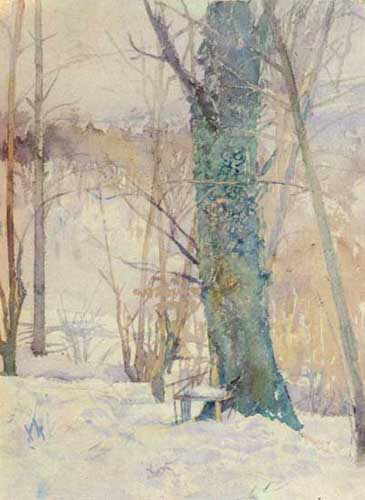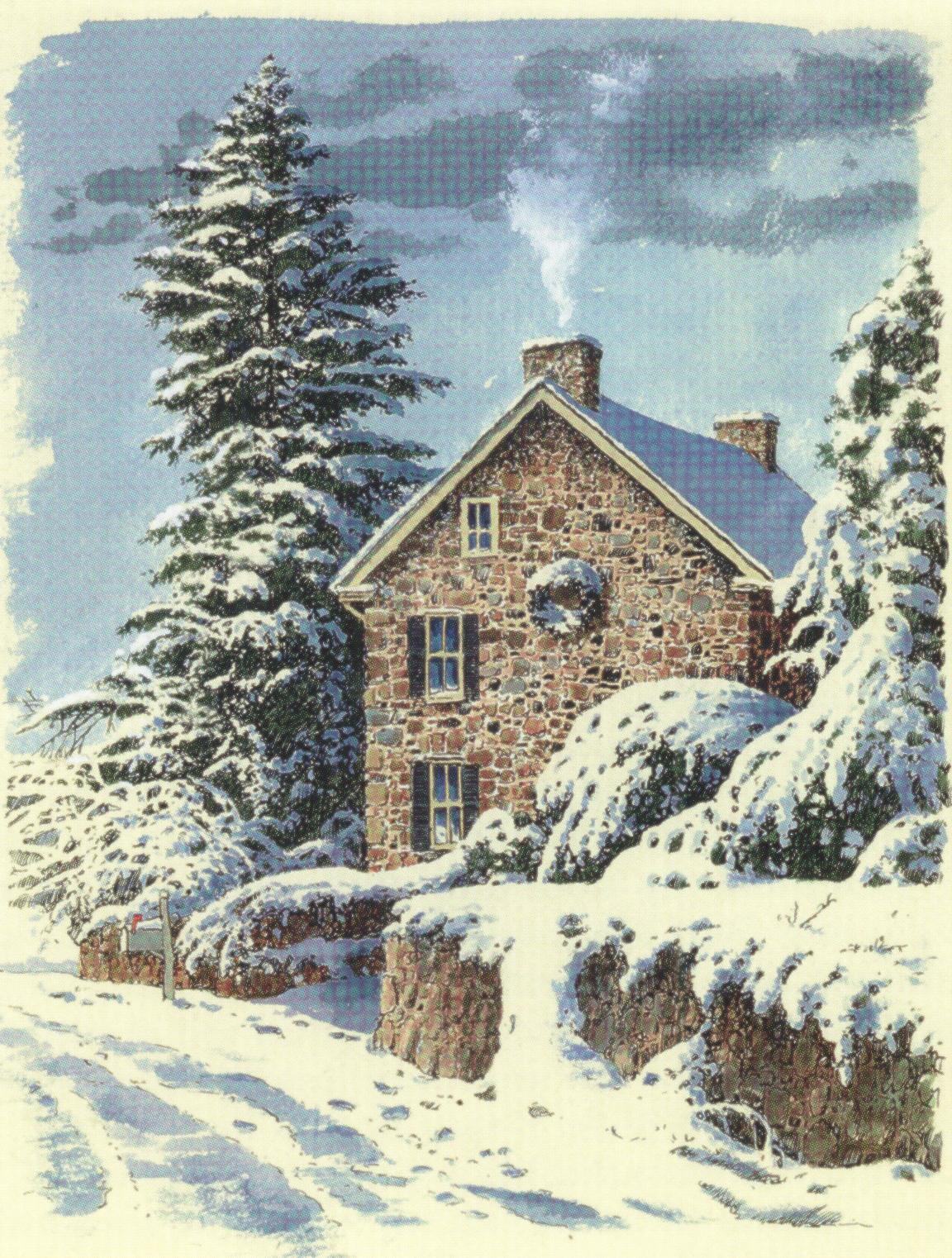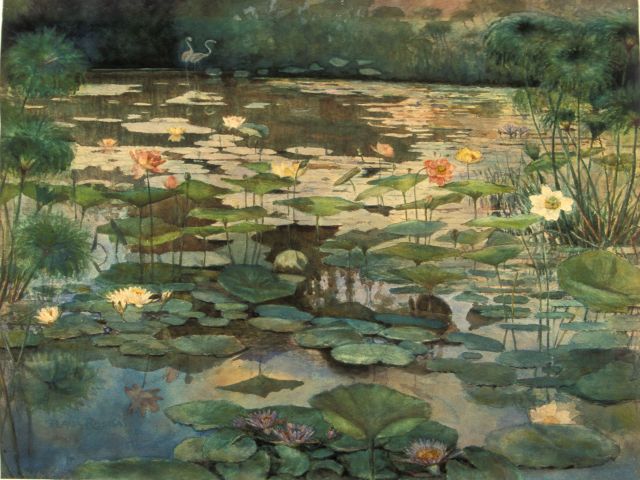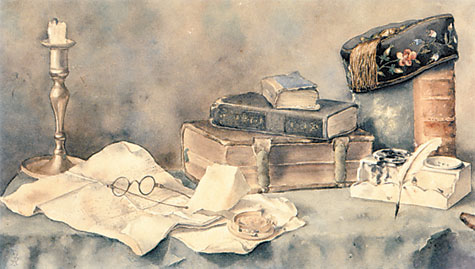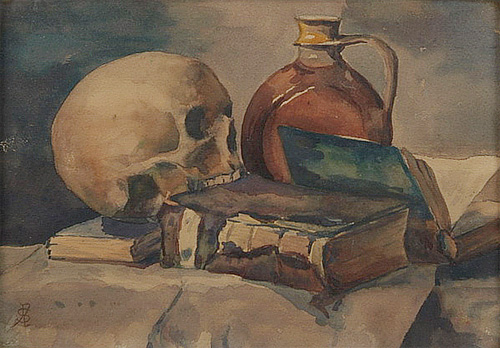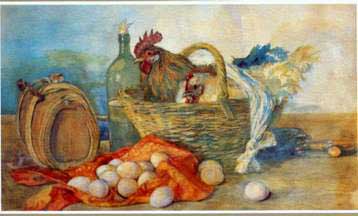<Back to Index>
- Astronomer Antonie Pannekoek, 1873
- Painter Slava Raškaj, 1877
- Sultan of the Ottoman Empire Mehmed IV, 1642
PAGE SPONSOR

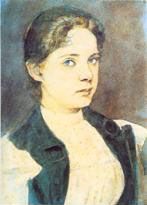
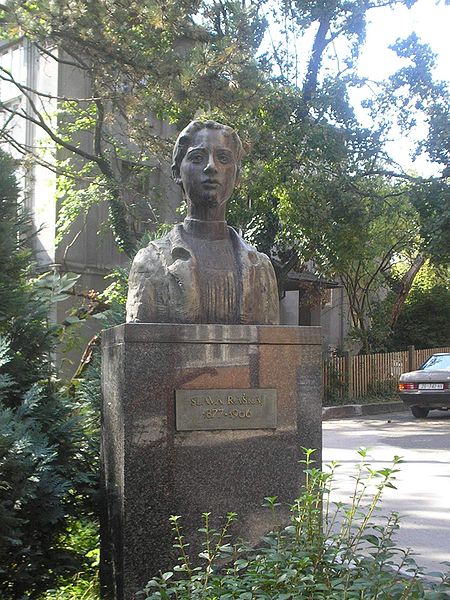
Slava Raškaj (2 January 1877 – 29 March 1906) was a painter considered to be the greatest Croatian watercolorist of the late 19th and early 20th century. Deaf since birth, Raškaj was schooled in Vienna and Zagreb, where her mentor was the Croatian painter Bela Čikoš Sesija. In the 1890s her works were exhibited around Europe, including at the 1900 Expo in Paris. In her twenties Raškaj was diagnosed with acute depression and was institutionalised for the last three years of her life before dying in 1906 from tuberculosis in Zagreb.
The value of her work was largely overlooked by art historians in
the following decades, but in the late 1990s and early 2000s interest
in her work was revived. A Croatian film about her controversial
relationship with Sesija titled 100 Minutes of Glory directed by Dalibor Matanić was released in 2004, and a grand retrospective exhibition featuring 185 of her works opened at the Klovićevi dvori art gallery in Zagreb between May and August 2008. In December 2000 the Croatian National Bank issued a silver commemorative coin depicting Slava Raškaj, in their Znamenite Hrvatice (English: Famous Croatian Women) series, along with children's writer Ivana Brlić - Mažuranić and the 17th century noblewoman Katarina Zrinska. Raškaj was born as Friderika Slavomira Olga Raškaj on 2 January 1877 into a middle class family (her mother Olga ran the local post office which was at the time a prestigious administrative position) in the town of Ozalj in present day Croatia (at the time in the Kingdom of Croatia - Slavonia, a subdivision within Austria - Hungary). Olga
liked painting in her free time and she passed her love for arts very
early on to both her daughters Slava and Paula (Paula later worked as a
school teacher in Orahovica and also continued to paint casually in adulthood). When she was eight Slava was sent to Vienna to
enrol at a school for deaf people where she first learned to draw. Her
drawings from that period mainly depict casts of classical sculptures
drawn in pencil or ink (two of these drawings survived and are kept on
display at the Croatian School Museum at Marshal Tito Square in Zagreb). During her time in Vienna she also learned German and French and in later years moved on to watercolor and gouache techniques before returning to Ozalj in 1893. Upon
her return, the local schoolteacher Ivan Muha - Otoić noticed her
artistic talent and urged her parents to send her to Zagreb for further art instructions at the renowned painter Vlaho Bukovac's atelier in 1895 (as Bukovac was a friend of Muha - Otoić). Once in Zagreb, Bukovac refused to help her but then Bela Čikoš Sesija took
her in and began instructing her in his own studio in 1896. She spent
the next few years working with Sesija - she lived at what was then the
State Institute for Deaf-mute Children (English: Zemaljski zavod za odgoj gluhonijeme djece) on Ilica Street, and she used a local morgue as her studio (in the meantime her former teacher from Ozalj Ivan Muha - Otoić became director of the Institute in 1895). Raškaj's repertoire was peculiar at the time - she painted somewhat macabre paintings of still life, watercolors with unusual objects such as a starfish, a silver jewelry chest, and even more interesting, pairs of objects such as a red rose and an owl, or a lobster and a fan. In the late 1890s she started painting en plein air, depicting outdoor scenes from the Zagreb Botanical Garden, Maksimir Park and other parks in the city, featuring somewhat lighter tones and colors. In
1899 she returned to her hometown of Ozalj and continued to paint
outdoors, which was also unusual at the time. Her most valuable
paintings were all created in the 1890s, including works such as Self - portrait, Spring in Ozalj, The Old Mill and others. Her works were first publicly exhibited at the Art Pavilion in Zagreb soon after it opened in 1898, where six of her watercolors were presented along with the works of renowned painters such as Menci Klement Crnčić and Vlaho Bukovac. Her paintings were also exhibited in Saint Petersburg, in Moscow and at the Exposition Universelle in Paris in 1900, where five of her paintings were shown. In 1900 first symptoms of depression began to appear. She was hospitalised but soon after that she was released for home care. However, her condition deteriorated further and Slava was eventually institutionalised at a psychiatric hospital in Stenjevec in 1903. She completely stopped painting in her last years, and died on 29 March 1906 from tuberculosis.
Otoić helped her to open her own
atelier. It was a small, white painted room, once a mortuary. Her first aquarel was completed there, and probably today's most famous self portrait from
the year 1898. In 1899, Raškaj spent at home in Ozalj, wandering
outdoors, drawing the landscapes, perfecting her favoured medium technique, enriching them with her unique and distinguished style and sensitivity. Her works have been exhibited since 1898 in art pavilions of Zagreb, Moscow and Saint Petersburg. It was the prolific part of her career when most of the valuable works were done, including: Soon, the first symptoms of the disease started to show up — loneliness, alienation, need for privacy and nature. Old abandoned mills, depth of the canyon of Kupa river, ruins started to be the focus of her mind. In 1902, due to chronic depression, aggression and other psychological symptoms she was institutionalised. She died March 29, 1906.


